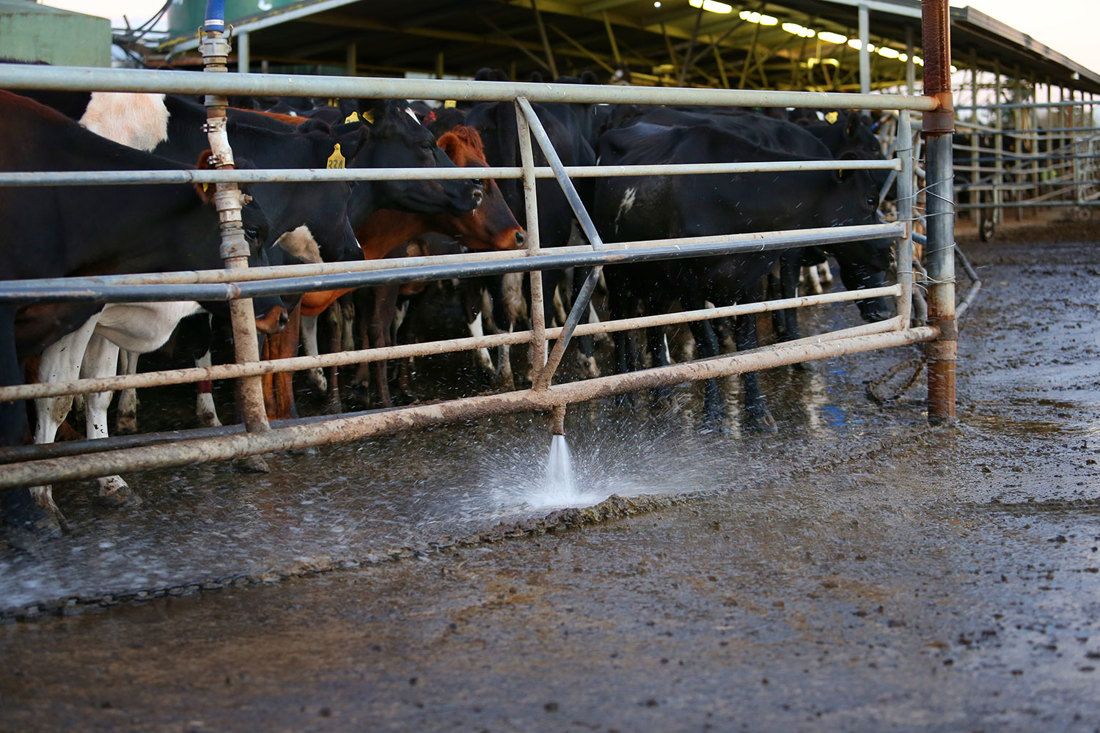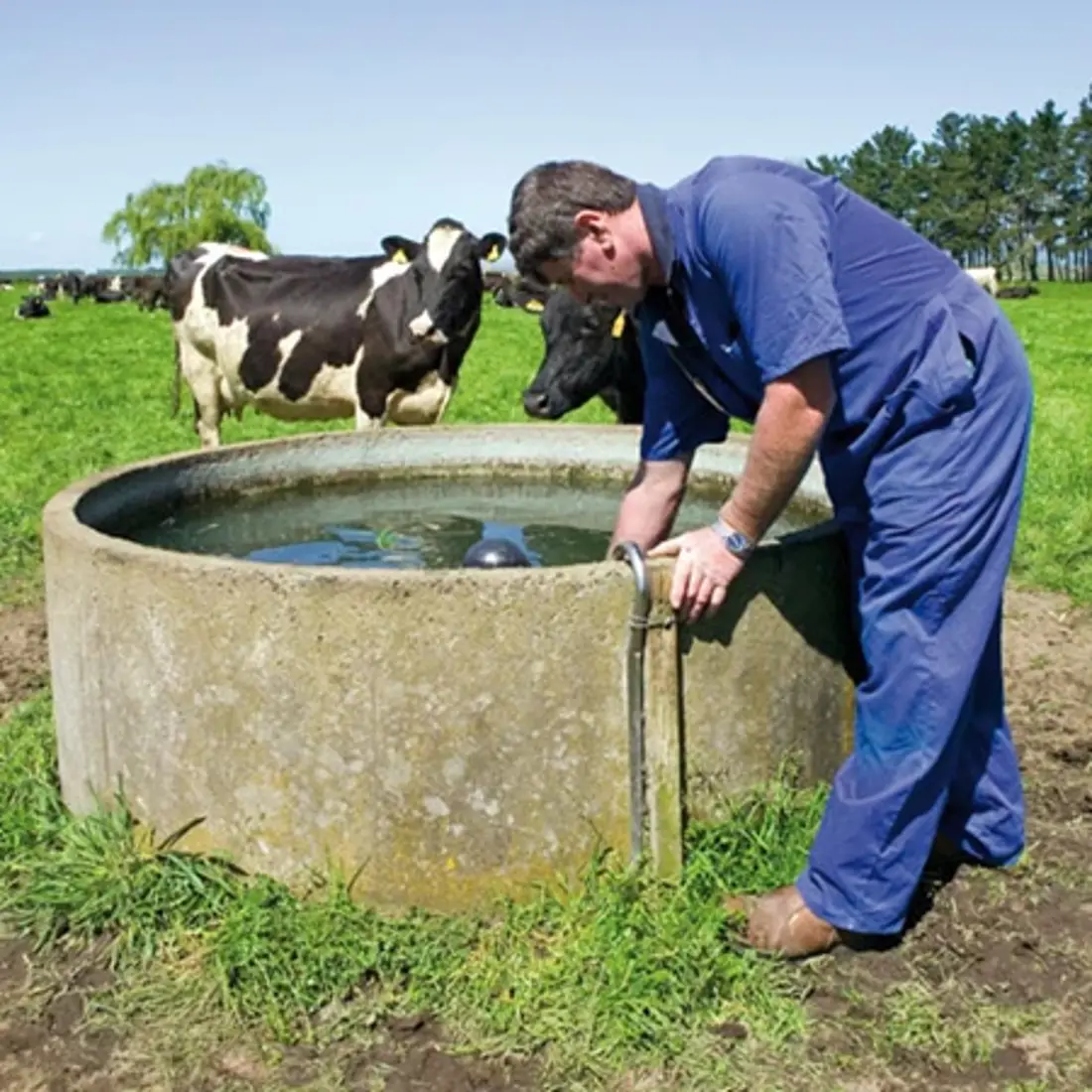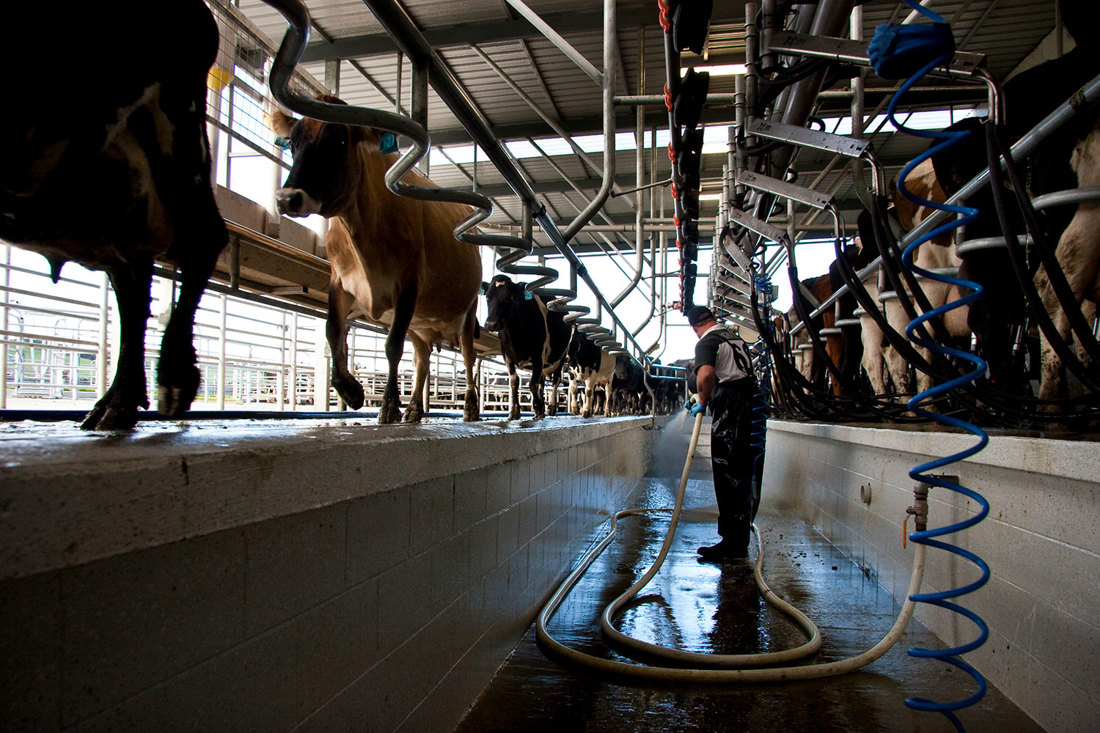Water use overview
4 min read
Efficient water management on your dairy farm can save water, time, and money. This page highlights some practical tips and techniques to enhance water efficiency on-farm, including mapping, reticulation systems, trough maintenance, leak detection, and staff training.
A farm map can be used to outline details of the water system, highlight areas prone to leaks and losses, identify where improvements could be made and where meters should be/are installed.
Farm water maps are useful for relief milkers and staff so problems can be solved when you are off the farm.
Details should include:
Tip: Include on your map an indication of what is a fix and what is to be replaced when it breaks down. This will help to spread the cost of upgrades over a manageable timeframe.

Frequently check nozzles in the shed are working correctly, free from corrosion, and aren't using more water than required.
Older, poor quality water lines and connections are more likely to split and leak.
Water lines that are near the surface, run under races or over drains are at particular risk of damage. Mark the locations of these weak spots on a map.
Having a check and maintenance system for water troughs that staff are familiar with is an important preventative measure for leaks.

A structured approach to trough maintenance ensures your water distribution system operates efficiently.
An estimated 26% of stock drinking water is lost due to leakage. This wastes valuable water, causes areas of mud and flooding and incurs extra pumping costs. Having leak detection systems and a process to deal with leaks helps to manage them and reduce these effects.
Leaks can vary in the rate of water loss. Fast leaks are often noticed immediately and fixed quickly while small leaks can often go undetected for a long time.
Early detection can prevent excessive water loss. A water meter with telemetry can alert you as soon as the leak occurs. If the leak is in the middle of the night, turn taps from the water tanks off and deal with the leak in the morning.
Other ways to notice large leaks:
See the meters and monitoring page for more information on setting up a leak detection system.
Slow, low-rate leaks are often not detected for a long time because the water system can cope with the leak. They are often only detected when they become a major leak or in summer when green patches are noticed in brown paddocks. While they are slow leaks, the amount of water adds up over time. One of the best ways to detect slow leaks is to have a water meter, or a water meter with telemetry and a data logger.
With a water meter, water use can be monitored when water should not be flowing e.g. at night when cows are not drinking. If water is flowing, then the dials will be turning slowly and it is likely there is a leak. Farm areas can then be turned off with isolation valves to work out where the leaks are.
Finding slow leaks is much easier when a data logger and telemetry is installed. Night-time water use can be monitored over time, and if water use is higher than it should be, it may be due to leaks. If houses are connected to the stock drinking water line they may use water at night. Areas of the farm that the cows are not in can be turned off with isolation valves over successive nights to work out where the leak is. The nightly recorded water use can be checked to see if water use has decreased.
Which staff member is responsible for water tasks?
This will help to ensure things are done regularly and smart water use efforts run smoothly.
What is the farm’s agreed yard wash-down method?
Significant amounts of water can be saved (or wasted) on the farm depending on how yard wash-down is done. Train new staff on this and review it with workers each season.
What is the procedure for dealing with leaks and losses?
Write down the steps you want taken when there is suspected water loss to ensure staff have a consistent approach. You could use a board to note the status of the problem while it is being attended to and to sign-off completion. Some experienced farmers say if it isn’t written down it doesn’t happen.

Efficient washdown ensures water use is minimised.
Now’s the perfect time to check in, plan, and set up for a strong season. We’ve pulled together smart tips and tools to help you stay ahead all winter long.
Whether you prefer to read, listen, or download handy guides, we’ve got you covered with trusted tools to support your journey every step of the way.